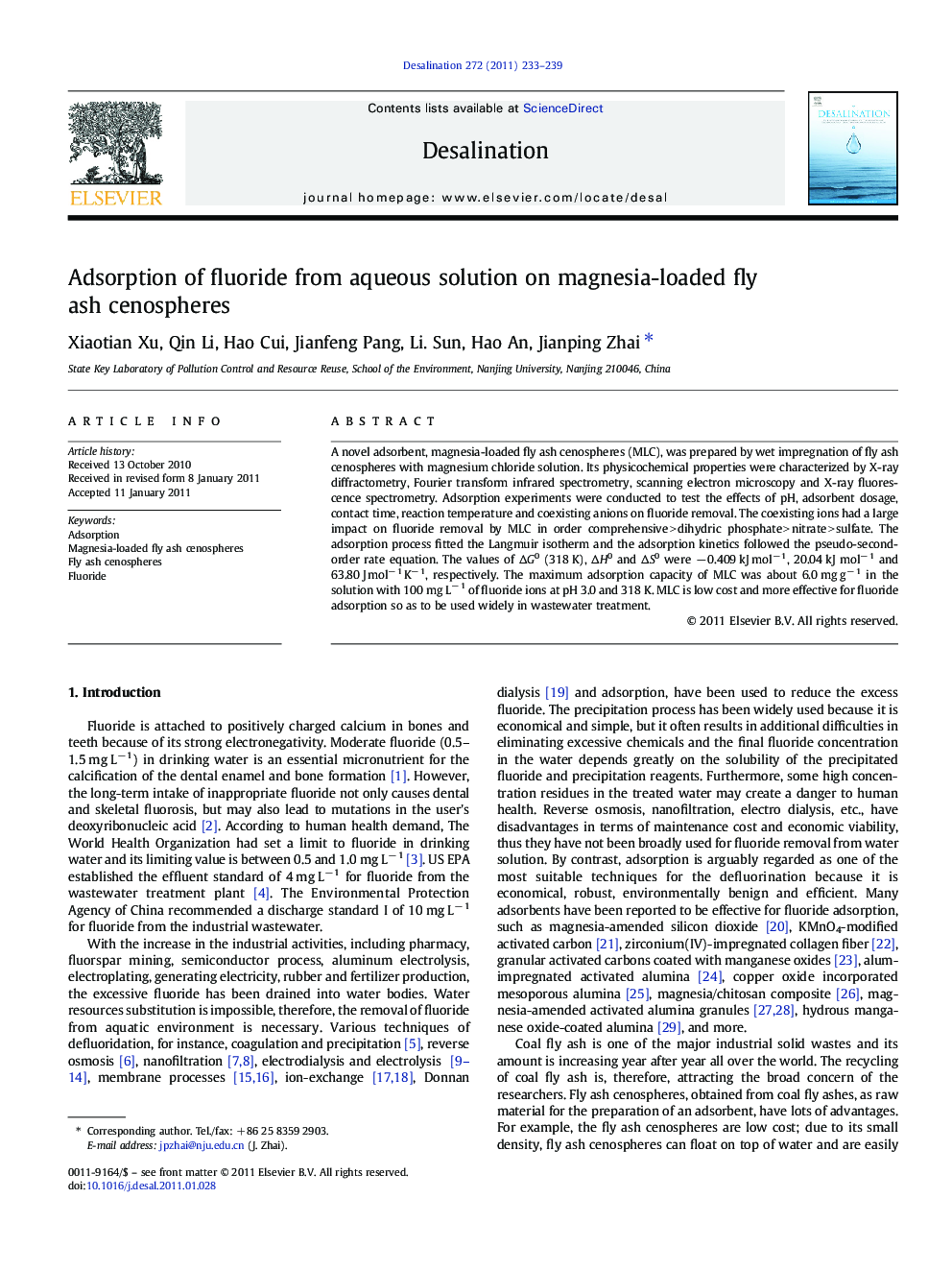| Article ID | Journal | Published Year | Pages | File Type |
|---|---|---|---|---|
| 625229 | Desalination | 2011 | 7 Pages |
A novel adsorbent, magnesia-loaded fly ash cenospheres (MLC), was prepared by wet impregnation of fly ash cenospheres with magnesium chloride solution. Its physicochemical properties were characterized by X-ray diffractometry, Fourier transform infrared spectrometry, scanning electron microscopy and X-ray fluorescence spectrometry. Adsorption experiments were conducted to test the effects of pH, adsorbent dosage, contact time, reaction temperature and coexisting anions on fluoride removal. The coexisting ions had a large impact on fluoride removal by MLC in order comprehensive > dihydric phosphate > nitrate > sulfate. The adsorption process fitted the Langmuir isotherm and the adsorption kinetics followed the pseudo-second-order rate equation. The values of ΔG0 (318 K), ΔH0 and ΔS0 were − 0.409 kJ mol− 1, 20.04 kJ mol− 1 and 63.80 J mol− 1 K− 1, respectively. The maximum adsorption capacity of MLC was about 6.0 mg g− 1 in the solution with 100 mg L− 1 of fluoride ions at pH 3.0 and 318 K. MLC is low cost and more effective for fluoride adsorption so as to be used widely in wastewater treatment.
Research Highlights►A novel adsorbent (magnesia-loaded fly ash cenospheres) was synthesized. ►Its physicochemical properties were characterized by XRD, FT-IR and SEM. ►Effects of pH, dosage, time and coexisting anions on defluorination were examined. ►Maximum defluoridation capacity was about 6.0 mg g− 1 under experimental conditions. ►The adsorption process fitted the Langmuir model and pseudo-second order kinetic.
